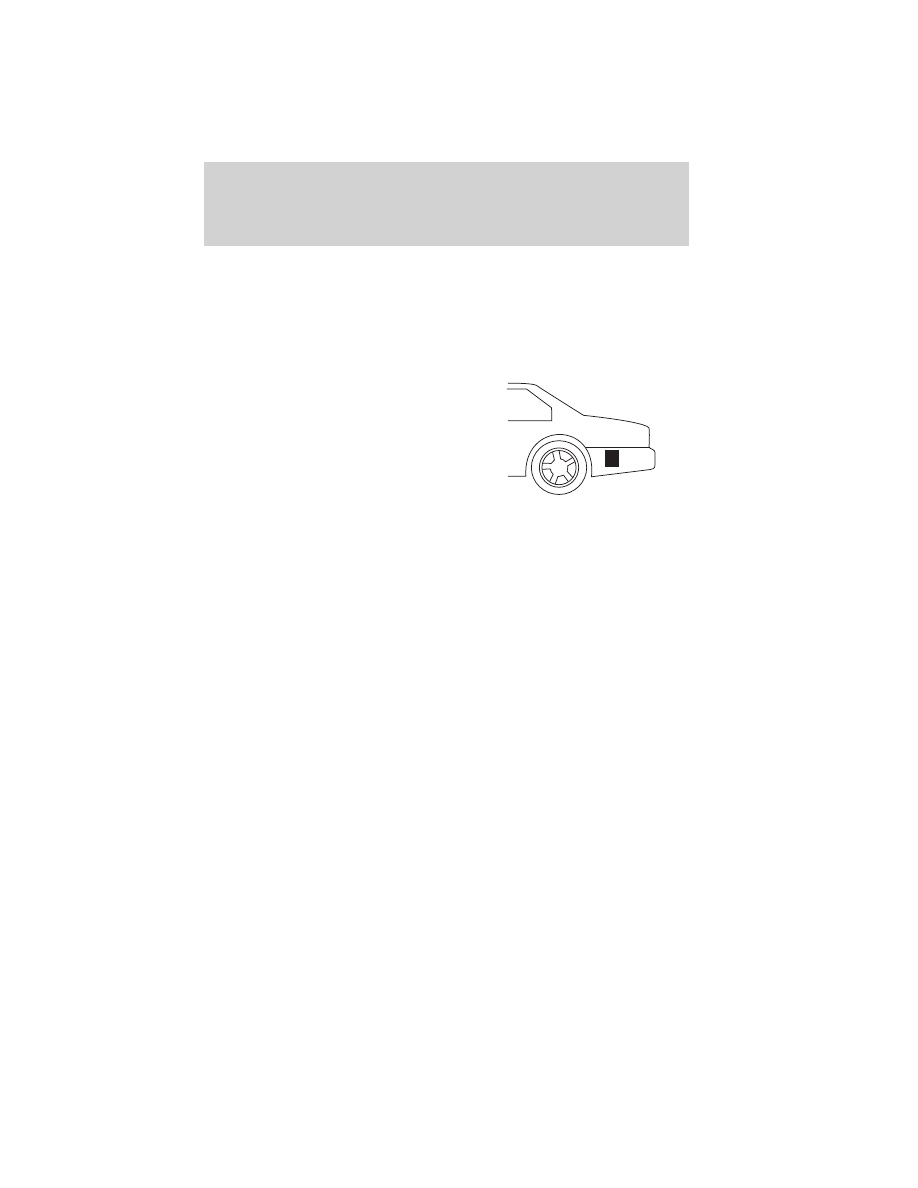Mercury Milan (2011 year). Manual - part 15

The BLIS
威 will trigger the alert for vehicles that enter your blind zone
from the rear or merge in to the blind zone from the side. Vehicles that
you pass, or a vehicle that enters the blind zone from the front, will
trigger the alert only after the vehicle is present in the blind zone for
three seconds. Note: For vehicles that pass through the blind zone
quickly, typically less than two seconds, the BLIS
威 will not illuminate the
alert.
The BLIS
威 consists of two radar
sensors each located rearward of
the rear wheel hidden behind the
bumper fascia. Do not place any
type of bumper sticker in this area.
Note: The BLIS
威 typically will not
detect parked vehicles, humans,
animals, or infrastructure (fences,
guard rails, trees, etc.). The BLIS
威
does not function when the transmission is in R (Reverse) or P (Park).
The BLIS
威 does not provide any additional warning when your turn
signal is activated.
BLIS
威 detection limitations: Due to the nature of radar technology,
there may be certain instances where vehicles entering and exiting the
blind spot zones may not be detected. Below is a list of circumstances
that may cause non-detection:
• Debris build up on the rear quarter panel fascias
• Certain maneuvering of vehicles entering and exiting the blind zone
• Vehicles passing through the blind zone at very fast rates
• Severe weather conditions
• When several vehicles forming a convoy pass through the blind zone.
BLIS
威 False Alerts
Due to the nature of radar technology, there may be certain instances
when the BLIS
威 will alert with no object present in the blind zone. This
is known as a false alert. Some level of false alerts are normal.
Circumstances that may cause a false alert are guardrails, freeway
concrete walls, cyclone fencing, sharp turns around a pole or building, or
coming to a stop with a vehicle directly behind but very close. False
alerts are temporary and self correct.
Driving
225
2011 Milan (mln)
Owners Guide, 1st Printing
USA (fus)